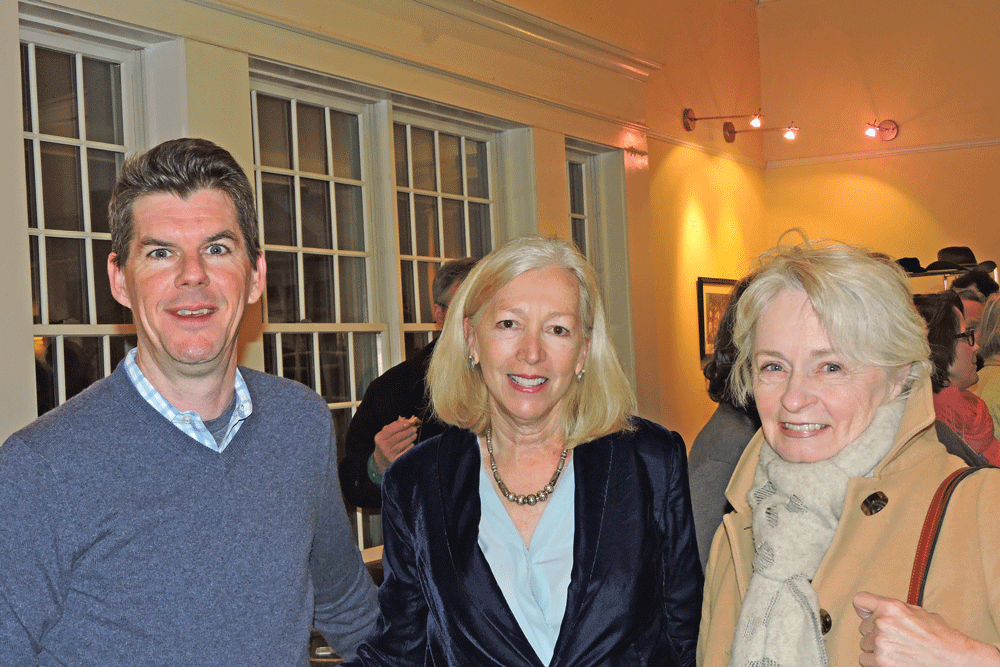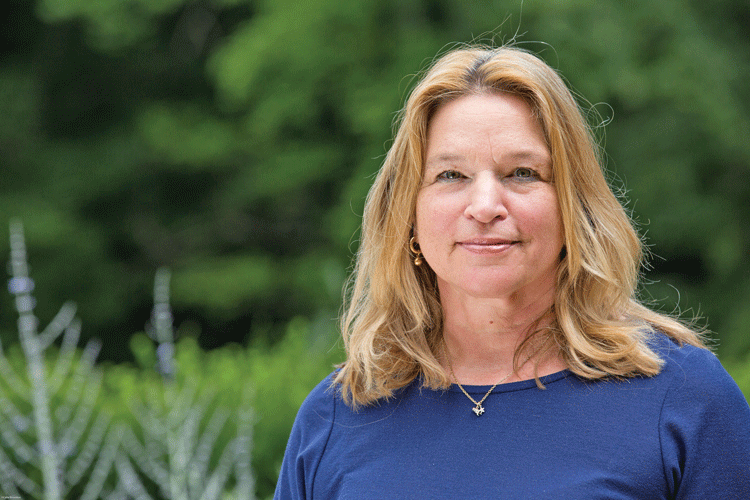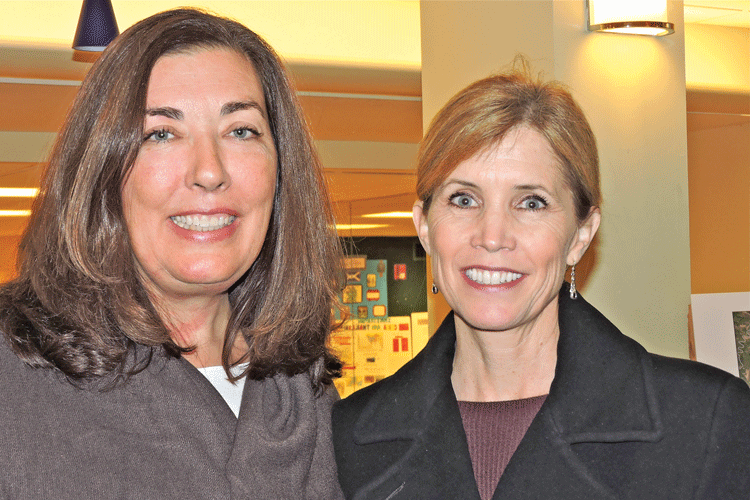Observing the Pale Blue Dot

By Dulcy B. Hooper
The subject matter was as fascinating as it was sobering: the dramatic changes documented over five decades of observations made by NASA scientists viewing Earth from space. Members of the audience who may have hoped to have their minds put at ease that climate change is not real would have been sorely disappointed.
The event took place on February 2 at the Hill School Performing Arts Center andwas co-sponsored by Land Trust of Virginia (LTV) and Goose Creek Association. Laura Chlopecki, a member of the Goose Creek Association board of directors, was enthusiastic about the joint effort.

“My involvement has awakened me to the ongoing challenges between preservation and development,” she said. “Working together with LTV and others, we hope to support smart growth within the larger context of a sustainable natural environment.”
The audience of nearly 180 heard about the potentially dire consequences of continued carbon emissions and so much more, from severe droughts to rising sea levels to the reality of the ever more powerful storms experienced by many around the world and certainly here in the United States.
Christopher Dematatis, chairman of LTV’s board of directors, opened the evening with a few comments. “You cannot view our planet from that perspective and not be a conservationist,” he said. LTV currently protects more than 16,000 acres in Virginia through conservation easements.
Dematatis introduced Dr. Ellen Renee Stofan, a planetary scientist who most recently served as NASA’s chief scientist and principal advisor on their science programs and related strategic planning. Stofan’s research efforts, prior to NASA, focused on the geology of Venus, Mars, Saturn’s moon Titan,
and Earth.
“Venus is fascinating to me,” she said, “because it really is the Earth gone wrong. And Mars is the place to look to in answering the question of whether or not life evolved off Earth, which is the most complex planet in our solar system.”

With a series of dramatic photographs taken from space, Stofan showed images of a sinking California coast, the shrinking mass of habitable land in Bangladesh, and the impact a lack of water is having on Cape Town.
“Too much water is a problem,” she said, referring to melting ice in the Arctic. “But not enough water is a problem, as well. If there is not enough water, we cannot grow the quantity of food necessary to meet the needs of populations around the world. This is not compatible with life. So our question is: Is it natural? Or do these weather events signal change?”
Stofan is unequivocal that our planet is warming and that the warming has accelerated over the last decade. She views 2017 as “an epic year” in terms of the many signs of climate change.
“Already,” she said, “we are seeing climate refugees here in the United States, with Florida having to accommodate so many people coming in from Puerto Rico after Hurricane Harvey. And the situation in Bangladesh will have worldwide implications in the coming years.”
Stofan’s message is that there is no time to waste.
“What can we all do?” she asked. “The fate of the planet is in our hands. We need to keep this planet habitable. To do that, we need to get close to decarbonizing our economy in the next five to 10 years.”

Stofan recently attended the World Economic Forum in Davos and says that she is confident that the country’s businesses are “seeing the writing on the wall” and are stepping up to the plate. She is also heartened that the largest states in the U.S. economy are sticking with the Paris Accord.
In her closing remarks, Stofan quoted Carl Sagan, the astronomer who was once considered the most popular scientist in the country.
“Look again at that dot,” Sagan wrote. “That’s here. That’s home. That’s us. On it everyone you love, everyone you know, everyone you ever heard of, every human being who ever was, lived out their lives. The aggregate of our joy and suffering, thousands of confident religions, ideologies, and economic doctrines, every hunter and forager, every hero and coward, every creator and destroyer of civilization, every king and peasant, every young couple in love, every mother and father, hopeful child, inventor and explorer, every teacher of morals, every corrupt politician, every ‘superstar,’ every ‘supreme leader,’ every saint and sinner in the history of our species lived there – on a mote of dust suspended in a sunbeam.” (Pale Blue Dot: A Vision of the Human Future in Space, by Carl Sagan 1994). ML


